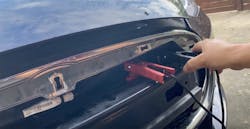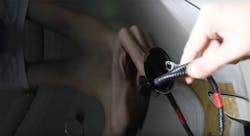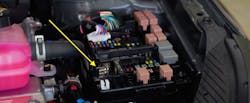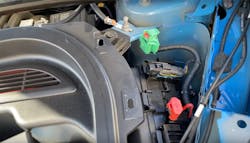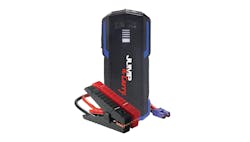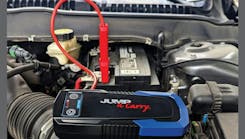What you need to know: Plug-in hybrids and EVs
When most people think of jump starting, they think of traditional internal combustion engine (ICE) vehicles and the time when grandpa had to come and jump their dad’s car because the battery was dead, or when dad had to come and bail you out when you sat in the school parking lot chatting with your friends while running the heater, lights, and radio with the engine turned off. For most people, battery electric vehicles (BEVs) and plug-in hybrid electric vehicles (PHEVs) don’t spring to mind when they imagine a jump starting situation. But, the reality is that the need for jump starting is an equally painful reality for owners of these newer technology vehicles as it is for someone driving a 1984 Chevrolet Caprice Classic. So, if you or someone you care about drives a BEV or PHEV, this article might be for you.
Combination of high voltage and low voltage batteries
We covered this in a previous article, but virtually every BEV and PHEV model on North American roads contains a low-voltage (LV) battery in combination with a high-voltage battery. The way those batteries interact and how they handle various tasks within the electrical system can vary by propulsion type and by make/model, but the most important thing to know is that the LV battery is critical to the vehicle starting event and, if it is dead or in some way compromised, the vehicle will not start.
Essentially, the most sophisticated EVs on the road are just as dependent on the LV battery as that 1984 Caprice. So, yes, you can “brick” your Tesla Model S Plaid if the LV battery drops too low to be of use. With as many BEVs and PHEVs as are now in the North American carpark, tales of woe and misery are piling up, just like we see with traditional vehicles. So, it makes sense to be prepared for such circumstances.
In some cases, the LV battery is needed to access the vehicle, get under the hood, or open the trunk. This can present serious problems if the LV battery goes dead. For instance, how do you access the LV battery if you can’t pop the hood? Some manufacturers have built-in workarounds for these situations, as we note below. But, this can present serious issues, such as the recent case of a toddler stuck in a Tesla in hot Arizona temperatures, where the fire department had to break the windows to get them out.
BEVs, PHEVs, or ICE - Always remember safety
No matter the type of propulsion, it is critical to always remember to follow the best safety practices when working on your vehicle, especially when working on and around batteries and the electrical system. So, wear protective eyewear, remove rings and jewelry, take care not to drop a wrench or other metal object on the battery terminals, follow all manufacturer’s instructions related to jump-starting procedures for the vehicle being serviced, and pay close attention to polarity in the vehicle and on whatever tool you use for jump-starting. If you need a refresher on jump-starting safety and basics, we published a recent article on this very topic.
While we manufacture both booster cables and portable jump starters, we always recommend using a jump starter for simplicity and also because, with one, you are never dependent on another person, as you are with booster cables. The simplicity piece cannot be overstated. Many people get very confused when using jumper cables and confusion can lead to serious problems, jeopardizing the vehicle and risking personal injury. (Here’s a great example.) Although it’s an ICE vehicle, the moral of the story is the same for all vehicle types.
A different sort of jump-starting
We should clarify, when jump-starting LV batteries in most BEV and PHEV configurations, you aren’t really jump-starting in the way that you are when performing this task on an ICE vehicle. On an ICE vehicle, when you jump-start, you are supplying a spike of power to turn the starter and get the engine running in place of the depleted vehicle starting battery. With BEVs and PHEVs, the jump starter is essentially augmenting the disabled/depleted LV battery, essentially raising system voltage enough to allow the start event to occur and fire up the high-voltage battery and other systems. So, you’re still powering (jumping) the LV battery, but the nature of that jump is different.
If available, always use alternate starting points
Most of us grew up learning to connect directly to the battery-positive terminal when jump-starting. This is almost second nature, though the jump starter negative clamp should always be connected to an engine or chassis ground (we won’t belabor this point, which we make frequently). With BEVs and PHEVs, most vehicle manufacturers provide alternate starting points that allow you to provide the power necessary to get the vehicle started but not interface directly with the vehicle’s LV battery.
Here are a few examples...
Tesla
Some Tesla models feature alternate starting points behind the front fender shroud. This is a great solution because it resolves the issue where a dead LV battery prevents the hood from being able to be opened.
On the Model 3, there are wires running to the back of the front tow hook cover, which, when accessed, allow the connection of a jump starter, which then provides the necessary power to open the hood.
Hyundai/Kia
Most Hyundai/Kia PHEV models incorporate a positive starting point within the fuse box, which typically is marked with a large “+” symbol, indicating the starting point is contained within it. Simply remove the fuse box cover to access the positive starting point (shown below). Usually, you can find a good grounding point for these vehicles on the electric motor, but it can vary from model to model.
Ford Mustang Mach-E
For many Mach-E models, the alternate starting points are in the front driver’s side fender well. To access these points, you are required to remove two plastic shrouds, but, once removed, the starting points are clearly marked and easily accessible.
You get the idea. In almost every case, alternate starting points are available and the manufacturer-recommended way to provide jump-starting power to the LV battery. Consult your owner’s manual for the proper connection method and procedure for your specific vehicle.
The jump-start process is familiar
Once you have identified the proper connection procedure for your vehicle, make your connections, remembering the proper connection sequence (same for all vehicle types). First, connect the positive jump starter lead to the positive starting point, and then connect the negative jump starter lead to a proper vehicle ground (engine, electric motor, or chassis ground). Next, attempt to start the vehicle. Once started, disconnect your jump starter in the opposite order from the connection process. First, remove the ground connection, then remove the positive connection, always taking care not to let your jump starter leads touch each other, a common connector, or vehicle components.
Tools for jump-starting BEVs and PHEVs
Jump-N-Carry lithium jump starters provide an ideal combination of power, convenience, and safety features for use when jump-starting BEVs and PHEVs. Models JNC325 and JNC345 deliver plenty of power, both in terms of max output jump-starting capability for use on ICE vehicles and reserve capacity for use in jump-starting BEVs and PHEVs. In addition, they have numerous convenience features that make jump starting quicker and easier, including long cables to allow the operator to make a proper connection. The JNC345 features a 40” cable reach, which means that it can span over 80” between the two clamps. Finally, they have a host of safety features, including reverse polarity protection and short circuit protection, which help the operator avoid the consequences of a simple mistake during jump-starting set-up.

